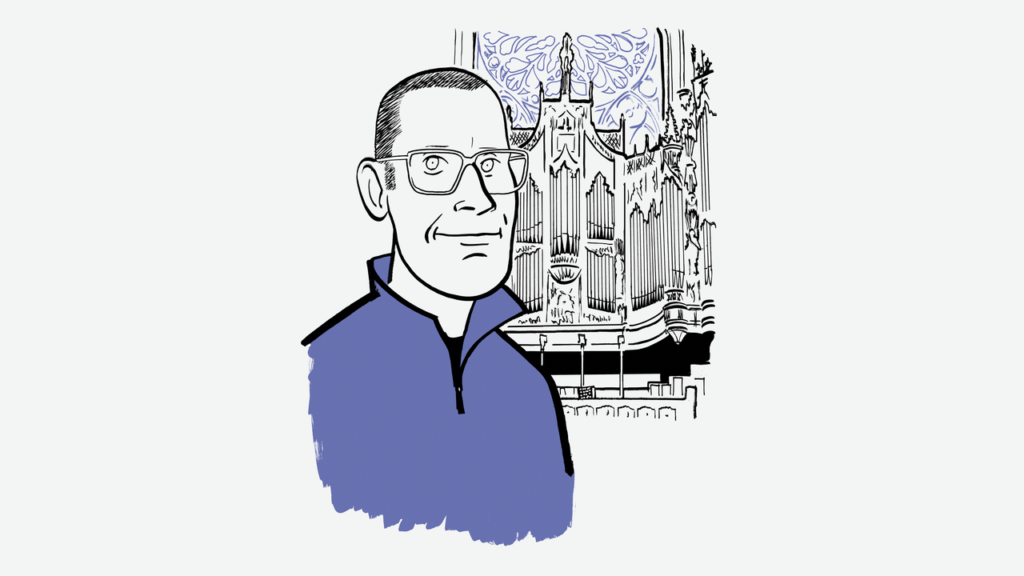In 1868, horse-drawn carriages delivered the ten-thousand-odd components of a giant pipe organ from the factory of Henry Erben, near Manhattan’s Five Points neighborhood, to St. Patrick’s Basilica, on Mott and Prince. The parish, then largely Irish, was still grieving the loss of so many young men from the Fighting 69th at Bull Run and Antietam. Moneyed interests were moving uptown. Erben’s organs, meanwhile, were regularly shipped thousands of miles, to Havana, Caracas, the Western frontier. For an immigrant neighborhood in a young country that had just survived a great rupture, the purchase of a cathedral organ to rival Europe’s finest was a source of pride. A wave of Italians followed the Irish. (The Erben organ appears in “The Godfather: Part III.”) Then came Dominicans and Chinese. The organ remained in service. After more than a hundred thousand liturgies, the church’s musical director would say that the sound of the Erben at Old St. Patrick’s still carried “a tinge of sadness” from the Civil War.
Or maybe it was the accumulated soot and the clumps of plaster in the pipes, the duct tape over cracked leather. By 2024, at any rate, the organ, like the nation’s politics, was in rough shape. Rather than let it die, a group called Friends of the Erben Organ (supporters include Martin Scorsese) committed to a painstaking renovation. Over three weeks in February, a crew disassembled the contraption. “Half of the church was covered in pipes and mechanisms,” Jared Lamenzo, the musical director, recalled, noting that the wooden levers that supplied wind to the bellows were so large they “looked like you would tie up a pack of Clydesdales to them.” Off the organ went, in several box trucks, to an old tobacco warehouse in Lancaster County, Pennsylvania, one of the few places left where horse-drawn carriages transport anyone other than tourists, and where craftsmen specialize in pre-electric technology.
“You still smell tobacco on a damp day,” Hans Herr, one of the owners of Brunner & Associates, an organ works, said recently, thumbing a suspender, after greeting Lamenzo and some fellow organ mavens, who had arrived from the city in a Porsche Cayenne that was now parked next to a cornfield. Inside the warehouse, and in a garage behind it, technicians were working on the organ’s innards: applying alcohol to the oxblood-stained wooden pipes, attending to “witness marks” (dried candle wax, pencil notations) on the bellows, which turned out to have been reconfigured during a prior intervention, in 1902. A worker who was huddled over a slanted desk joked that he was packaging antique “New York City coal dust” for resale. To a novice eye, the only clear indication that all this labor was in the service of a musical instrument was the triple-decker keyboard sitting on a table, next to some bubble wrap, on the second floor. The keys themselves looked filthy. “We could put hydrogen peroxide on it, but I’m guessing Jared probably likes the yellowed look,” Herr said. Lamenzo nodded, but he acknowledged that the ivories had been replaced in 1969.
One of the buffs who had accompanied Lamenzo was Laurence Libin, a curator emeritus of the musical-instrument collection at the Metropolitan Museum. He theorized that hand lotions and sanitizer expedited the aging process. Libin approached with a device for measuring the width of the keys and noted some irregular spacing between them. “It’s interesting that the ones in the center are gentle at the corners, and the ones that you don’t use are sharp as nails,” he said.
Up on the third floor, another technician demonstrated cone tuning, a means of bending the tops of thin metal pipes either inward or outward by using a cone-shaped brass hammer. He surprised his guests by mentioning a phone app that specifies exactly how many millimetres of adjustment are required to achieve a desired pitch. “There’s an app for this?” Libin asked, incredulous.
“There’s an app for everything,” the technician went on. “It’ll also correct for temperature. You can tell it, ‘I’m tuning the organ and it’s sixty-three degrees in the room, but I need it to sound correct when it’s seventy-two degrees.’ ”
“Cutting-edge technology applied to medieval technology,” Libin said, marvelling.
In the garage, dozens of crates labelled “Erben NYC” were untouched. It’ll be months before Herr and his colleagues are ready to reconstruct the organ and test it, only to break it down again to be trucked back to Mott Street. The atmosphere in the warehouse was studiously cheerful, and a visitor, thinking ahead to the 2026 midterms, wondered whether the tinge of sadness could yet be exorcised from the organ’s sound. ♦


